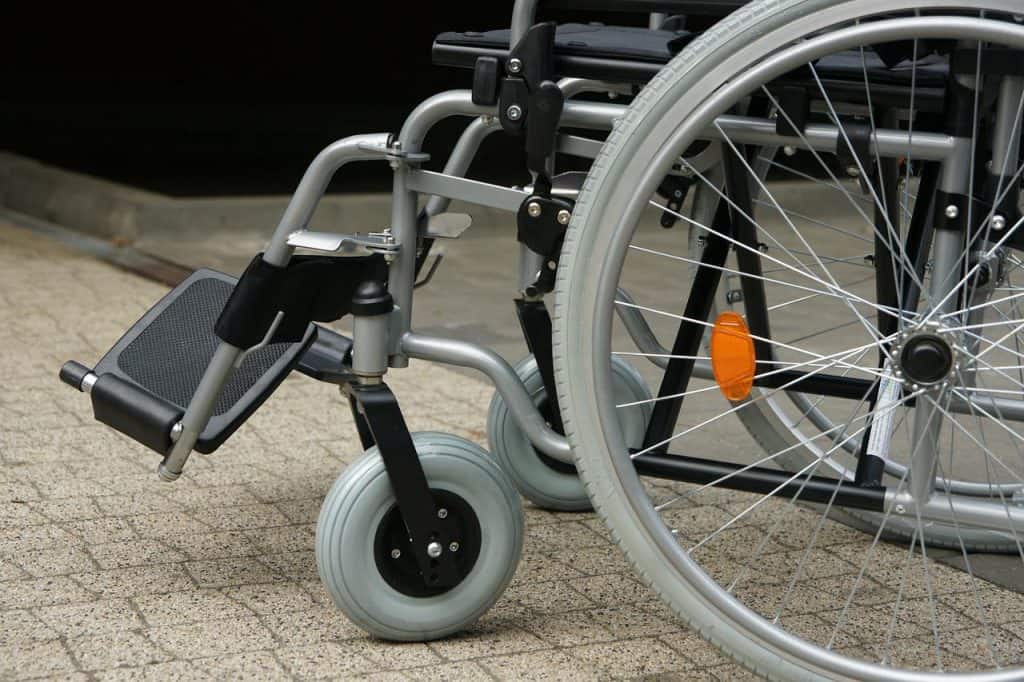Are you unable to work full-time due to a disability? Have you started researching how to fill out a disability claim application?
If you’ve recently become disabled and can no longer work at full capacity, you may be feeling a little overwhelmed.
Many people walking in your shoes are wondering how they will pay for both living expenses and those expenses that come with a disability.
Though you’re no longer able to work full-time, you might be asking yourself, “Can I be working part-time while collecting disability?”
If you’ve been asking yourself this question, we have good news for you.
The answer is, “Yes!”
However, there are some rules around getting disability benefits and working that you should know. In this article, we’re going to unpack Social Security’s work requirements for people receiving disability benefits.
First, we want to debunk a few common misconceptions about Social Security disability benefits.
Social Security: Working While Disabled
Unfortunately, there are more than a few people who believe that Social Security encourages people to stay on dependent on the government. There are also a lot of people who assume that the Social Security Administration (SSA) either…
- Doesn’t want people with disabilities in the workforce or;
- Only wants people with disabilities to work so that they can reduce benefit payouts.
For someone who has recently become disabled, hearing some of these opinions can be really discouraging. You might feel some shame about needing extra support through the disability benefits program and other government programs.
Know that there is no shame in receiving help from the government if you have a real need.
While it’s true that working does impact your monthly benefit amount (more on that later), the SSA actually supports those who have disabilities in getting work. The truth is that they don’t want American citizens to have to depend on them in order to pay for basic living expenses.
The SSA recognizes that work can provide people with a sense of purpose and dignity, especially those who are disabled. It can reduce the isolation and alienation that can come with a disability by providing individuals with a connection to the community.
Social Security wants to help individuals with disabilities on the road to financial independence.
If you have a disability but want to continue to work, know that you have options and that Social Security has specific channels of support to help you.
When you are approved for disability benefits and are between age 18 and 64, you are automatically eligible for the Ticket to Work program. Let’s get into the basics of how the program works.

What is the Ticket to Work Program?
The SSA’s Ticket to Work program is a free and voluntary program designed to help Social Security disability beneficiaries from ages 18-64 who want to work. The Ticket to Work program can help you…
- Improve your earning potential
- Be successful in the workforce long-term
- Connect to employment service providers and free employment support services
- Find a job that fits your situation
What’s great about the Ticket to Work program is that you can keep your benefits while you explore employment options, get training, and gain work experience. Your Medicaid or Medicare coverage will most likely also continue as you transition to work.
If you become unable to work due to your disability, it is possible for you to return to receiving benefits without reapplying.
The reality of Social Security disability benefits is that the monthly amounts are low. In 2022, the average monthly benefit for a disabled individual is $1,358.
That’s $16,296 annually, about $2,700 over the federal poverty line.
Though the benefit amount can be higher, most people don’t receive the maximum amount. If it’s possible for you to do so, the best plan of action is to find work that pays more than what you receive in disability benefits.
So, if you decide that the Ticket to Work program is for you, what can you expect?
There are two timelines that are important to know. For Social Security disability insurance (SSDI), there’s the trial work period and the extended period of eligibility.
The trial work period gives you at least nine months to test whether you’re able to work. During the trial work period, you still receive full disability benefits regardless of your earnings.
Any month in which your total earnings amount to $970 or more is considered a trial work month.
If you’re self-employed, the rule is a little different: you have a trial work month when you earn $970 or more after business expenses or work more than 80 hours in your own business.
Once you’ve used nine cumulative trial work months within 60 consecutive months, the trial work period ends, and the extended period of eligibility starts.
After the trial work period, you can continue to receive benefits for any month in which you are not engaged in substantial gainful activity for up to 36 months. In 2022, earnings over $1,350 are considered substantial. For blind individuals, the earnings limit is $2,260.
We’ll touch a bit more on substantial gainful activity (SGA) in the next section. For now, just know that if you do start working, there is a limit to how much you can earn before your benefits stop.
You do not need to fill out a new application during the extended period of eligibility to receive benefits.
Know also that you have five years from the time you are able to engage in SGA to ask Social Security to restart benefits. If you are unable to keep working because of your medical condition, let Social Security know.
You will not have to file a new application or wait for benefits to restart while your medical condition is under review.
For supplemental security income (SSI) beneficiaries, the rules are slightly different. To learn more about the SSI program, you can read our article about how to apply for disability income.
If you are receiving SSI payments, your benefits will continue while you’re working until your total income reaches the SSI limit for the state in which you’re living. Note that this limit is different for each state.
Once you earn more than the SSI limit, your benefits payments will stop. However, with expedited reinstatement, you may ask Social Security to restart your payments if you become unable to work again due to your medical condition.
Please note that for both SSDI and SSI, Social Security requires you to report your work if you do start working.
You will be penalized for not reporting work activity while receiving disability benefits. You or your representative must report the following:
- If you start or stop work
- If your duties, hours, or pay change
- If you start paying expenses for work because of your disability
These changes can be reported by phone, mail, or in person at your local office. You can find an office near you using Social Security’s locator. You may also use your online Social Security account to report your wages.
Let’s go deeper into how much you can earn while receiving disability. We’ll return to substantial gainful activity and define what Social Security means by SGA.

How Much Can I Make While on Disability?
To qualify for disability benefits, you must be unable to do what Social Security calls “substantial gainful activity” (SGA). Basically, you must be unable to support yourself on your own in order to be considered eligible for benefits.
For statutorily blind individuals, the SGA amount is higher than for non-blind individuals. These amounts typically change when wages around the country change. This is determined by the national average wage index.
As stated above, the monthly SGA amount for blind individuals is $2,260. For non-blind individuals, it is $1,350.
There are no limits on your earnings during the 9-month trial work period. Your benefits will continue even if you earn more than the monthly SGA amount.
However, during the 36-month extended period of eligibility, you cannot make more than the monthly SGA amount.
If you are engaged in SGA during the extended period of eligibility, your benefits will stop.
Keep in mind however, that Social Security will deduct the cost of any Impairment-Related Work Expense (IRWE) from your countable income. If you have many such expenses, your earnings could be much higher than the 2022 SGA amount before they affect your benefits.
An IRWE must be an item or service that…
- Enables you to work
- You need because of a physical or mental impairment
- You pay for yourself and receive no reimbursement for from any other source (such as Medicare, Medicaid, or a private insurance carrier)
- Has a “reasonable” cost, meaning that the cost is in the standard range for such items or services in your community
Both SSDI and supplemental security income (SSI) recipients are eligible for an IRWE.
For SSI beneficiaries, Social Security will deduct the IRWE from your gross income when they determine your payment amount. If you receive SSDI, Social Security must first determine if you are working enough to meet the SGA amount. If so, the IRWE will be deducted from your gross earnings.
Make sure that you provide a verified statement that you’ve signed and copies of cancelled check(s) or paid receipt(s) as proof of payment for the IRWE.
If you cannot provide proof that you paid for the item or service, Social Security cannot deduct the expense from your income.
Some examples of an IRWE include:
- Transportation – this includes vehicle modifications related to your disability; however, the base cost of your vehicle is not IRWE-deductible
- Service animals – expenses for a guide dog or other service animal that enables you to work (training, food, licenses, veterinary services, etc.)
- Prosthesis – Artificial replacement of a hip, arm leg, or other body part
- Copayments for prescriptions
- Counseling services
- A personal attendant or job coach
- A wheelchair or other similar equipment
- Any specialized work equipment
We’ll give an example of an IRWE and how it’s deducted from a disability beneficiary’s income.
Emily receives SSI benefits and earns $1,025 per month from work. This is her only source of income. She needs to pay for her service dog’s care expenses, which amounts to $100 per month. Emily needs her service dog in order to work because of her disability. Social Security deducts the cost of this IRWE as follows:
$1,025 – Emily’s earned income
-$20 – General exclusion
-$65 – Work exclusion
-$100 – IRWE deduction for service dog expenses
$840 – Income after deductions and exclusions
$840/2 – Only half your income after deductions and exclusions is counted
$420 – Though Emily earns $1,025 per month, Social Security counts only $420 of her earnings when calculating her eligibility for her SSI cash payment.
Hopefully this example clarifies exactly how an IRWE is deducted from your monthly earnings. It can be a big relief to know that you can get deductions for items and services related to working with a disability.
The amount of your monthly benefit depends on your disability, your level of income and resources, and how much you earn at work. You will not know for sure the amount of benefits Social Security will approve you for until after your disability claim application is processed.
However, just know that disability payments are modest. They are really meant to cover basic living expenses.
With the rate of inflation and rise in the cost of living, average payments for will likely increase a little over time. Still, you can expect your monthly payment to be less than when you worked full-time.
This sobering reality is all the more reason to take advantage of the Ticket to Work program.
Next Steps: Determining Whether You Qualify for Disability Benefits
Now that you have the basic information about working part-time while collecting disability, you may want to know what your next steps are.
It’s important to know that Social Security has a very specific, strict definition of disability.
In order to qualify for benefits, your disability must meet the SSA’s definition. Social Security considers not only your medical condition, but also your ability (or inability) to work with that condition.
You may find it helpful to read about the eligibility criteria as you figure out whether your situation qualifies for benefits. We wrote an article giving a lot of detail about how Social Security determines your eligibility that can get you started.
If you are really struggling to determine whether you qualify, we recommend getting a disability case evaluation from a qualified professional.
Doing so can save you precious time and energy that can be used elsewhere as you navigate your medical and financial situation. It will also prevent you from putting lots of effort into your disability claim application only to receive a decision of denial because you didn’t actually qualify.
Here at BenefitsClaim.com we offer a free online disability case evaluation conducted by a trained specialist who can help you with your next steps.
All you need to do is fill out our free 1-minute survey and provide your contact information. Someone from our team will reach out to you to start the evaluation process.


